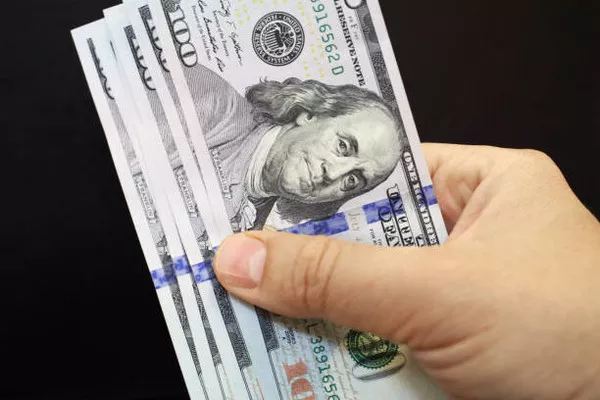Australia, known for its unique wildlife, stunning landscapes, and vibrant cities, also boasts a distinctive and efficient currency system. The question often arises: does Australia use dollar bills? The short answer is yes, Australia uses dollars, but these are not “bills” in the traditional sense known to many around the world. Instead, Australia employs polymer banknotes, a forward-thinking evolution from the paper currency of the past. This article delves into the history, development, and features of Australia’s currency, exploring why and how the nation transitioned to its current system.
Historical Context: From Pounds to Dollars
Australia’s monetary history dates back to the early 19th century when the British pound was the primary currency. The transition to the Australian dollar occurred on February 14, 1966, under the Currency Act of 1963. This significant changeover, known as “decimalisation,” replaced the Australian pound with the dollar, subdivided into 100 cents. The initial Australian dollar bills were made of paper, similar to those in use in many other countries.
The Introduction of Polymer Banknotes
In 1988, Australia made a groundbreaking move by introducing polymer banknotes, becoming the first country to do so. The transition began with a commemorative $10 note and, due to its success, expanded to other denominations. By 1996, all Australian banknotes were made from polymer, a type of plastic material, marking the complete shift from traditional paper bills.
Reasons for the Shift to Polymer Banknotes
Several factors motivated Australia’s shift to polymer banknotes, including durability, security, and environmental considerations.
Durability: Polymer notes are significantly more durable than paper notes. They are resistant to water and tearing, and they last much longer in circulation. This increased lifespan reduces the cost and environmental impact associated with frequently replacing worn-out notes.
Security: Polymer banknotes offer advanced security features that are difficult to replicate. These features include transparent windows, holograms, and complex multicolored designs. Such enhancements make counterfeiting much harder, thereby protecting the economy from the detrimental effects of fraudulent currency.
Environmental Impact: Although polymer is a type of plastic, the overall environmental footprint of polymer banknotes is smaller compared to paper notes. This is due to their longer lifespan and the fact that they can be recycled into new plastic products at the end of their useful life.
Features of Australian Polymer Banknotes
Australian polymer banknotes are renowned for their intricate designs and advanced security features. Each denomination has a distinct color and design, showcasing notable Australian figures and cultural elements.
Design Elements: The design of each note reflects Australia’s rich heritage. For instance, the $5 note features the Queen of England and the Parliament House, while other denominations celebrate prominent Australians like Banjo Paterson, Mary Reibey, and Edith Cowan.
Security Features: These notes incorporate several high-tech security features. The clear window, visible from both sides of the note, is one of the most recognizable features. Additionally, complex patterns, microprinting, and color-shifting elements further enhance the notes’ security.
Tactile Features: To assist the visually impaired, Australian banknotes include raised tactile features. These allow users to identify the denomination by touch, promoting inclusivity and accessibility.
Comparison with Other Countries’ Currency Systems
Australia’s polymer banknotes set a precedent that many other countries have followed. Nations such as Canada, the United Kingdom, and New Zealand have adopted polymer banknotes, acknowledging the benefits observed in Australia. This global trend highlights the success and practicality of polymer as a material for currency.
Public Reception and Adaptation
The public reception to polymer banknotes in Australia has been overwhelmingly positive. Initially, there were concerns about the feel and usability of the new notes, but these were quickly overshadowed by the benefits. The general populace appreciated the enhanced durability and cleanliness of the notes, and businesses valued the reduction in counterfeit currency.
Economic Implications
From an economic standpoint, the transition to polymer banknotes has been beneficial for Australia. The reduction in counterfeiting rates and the extended lifespan of the notes contribute to a more stable and secure economic environment. The savings from reduced production and replacement costs have had a positive impact on the national budget.
Future Prospects
Looking ahead, Australia continues to innovate its currency system. The Reserve Bank of Australia (RBA) regularly updates the designs and security features of its banknotes to stay ahead of counterfeiting technologies. Furthermore, discussions around digital currencies are gaining momentum, with the RBA exploring the potential for a central bank digital currency (CBDC).
Conclusion
In conclusion, while Australia does use dollar bills, these are not the traditional paper bills familiar to many. Instead, Australia employs advanced polymer banknotes, reflecting the country’s commitment to innovation, security, and sustainability. The transition from paper to polymer has proven to be a visionary step, influencing global currency practices and ensuring the robustness of Australia’s financial system. As the world continues to evolve, Australia remains at the forefront of currency technology, balancing tradition with forward-thinking advancements.


